Week 3 Forum - David Harris' Piece
Our forum session today was a class performance of one of David Harris' pieces. I originally wanted to play drums but Vinny beat me to it. Therefore I was on the piano with Dragos.
The way this piece was set out was not like traditional music notation. It had a score but instead of following a time signature with a tempo, we had to follow actual time as in minutes. So we would play whatever notes were on the score between say 5-10 minutes. This kind of music doesn't surprise me from David Harris, as I have been involved with his music since I have been studying here and so now I guess I'm used to it.
To me the piece was okay but nothing great. I didn't mind performing it because I like playing piano but I thought it went for way too long. I know the first years were bored but I guess I'm used to forum now that I'm a second year.
I was right in front of Adrian so I could hear the worlds that he was speaking. Some of them were funny and so I had some entertainment throughout the whole 45 minutes. Next time David, make it 10 minutes. [1]
[1] David Harris. 'Music Technology Forum Performance - EMU Space'. Lecture presented in the EMU Space, Electronic Music Unit, University of Adelaide, 15th March 2007.
Monday, March 19, 2007
CC2 Week 3 - Program Structuring
This is my Max patch for this week. I had some problems with the MIDI channel and also the note off messages. The MIDI channel for some reason defaulted back to channel 2 after I played a note. This is most likely due to the settings on the Novation MIDI controller. [1]

[1] Christian Haines. "Creative Computing: Semester 1, Week 3; Program Structuring" Lecture presented at the Electronic Music Unit, University of Adelaide, South Australia, 15th March 2007.
AA2 Week 3 - Electric Strings
This week we talked about recording strings. We went through both electric and acoustics instruments but on had time to record an electric guitar.
This is my strings recordings for this week. I also have a few pictures of my Pro Tools Session and also my microphone setup. I recorded myself "playing" guitar inside the studio. The amp and microphone setup was out in the EMU space.
I used a lot of compression in my recording as an experiement to see how loud and compressed I could make the sound. I am not the greatest guitarist so I couldn't get a great sound. [1]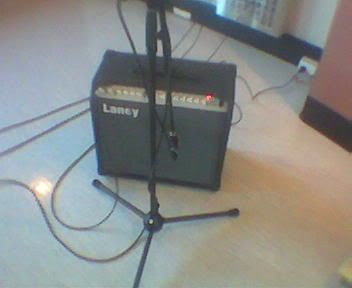
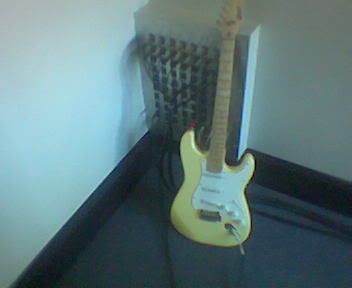
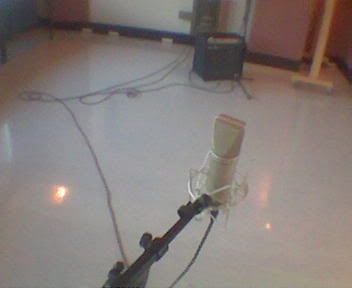


Electric Guitar - No Compression
Electric Guitar - With Compression
**All Files Are Small**
[1] David Grice. 'Audio Arts Lecture - EMU Space'. Lecture presented in the EMU Space, Electronic Music Unit, University of Adelaide, 13th March 2007.
Week 2 Forum - Originality
Today Steven talked about what originality is. Although the topic was interesting, it was hard to sit and listen for two hours, without a break, on his interpretation on originality. I have to admit my concentration was in and out. When I was actually concentrating, there were some parts that I agreed with and some parts which I though were just wrong.
Another point which I think is important is this: Who cares if you're original or not? I'm probably going to get slayered for this saying this (if anyone reads my blog). As a producer myself, I take influences from different artists. Does that make me unoriginal? If I can produce good music and unconsciencly take parts from other artists then I would consider that a good thing. By “taking parts” I don’t mean literally copying the music, I mean copying aesthetic ideas and structure of the music.
If you look at experimental composers like John Cage, you can see that in some cases originality doesn’t do much for the scenes. These composers are original but look at what they are producing? If I heard up a round of cattle and record that, I am original because no one has done it before. I am also producing nothing but noise that some would consider music. Not me. Originality has its place but the reason why experimental composers don’t release music is because their originality has surpassed what the average person actually wants to listen to.
At the end of the day, I’d rather be influenced by producers I admire and produce my interpretation of electronic music than try and be original like composers I don’t even like. That’s my two cents. [1]
[2] quite possibly my next piece. . .
quite possibly my next piece. . .
[1] Steven Whittington. 'Music Technology Forum Presentation - EMU Space'. Lecture presented in the EMU Space, Electronic Music Unit, University of Adelaide, 8th March 2007.
[2] Cattle. 'Windorah to Dig Tree at Burke and Wills Bridge, near Innamincka', Leisure Planet Music, http://www.amosbutleraudubon.org/WCY/06July16.htm (Accessed 12/03/2007)
CC2 Week 2 - Max Quickstart
This is my patch for the Max Quickstart. The selectable starting note object isn't really needed as you can select the starting note on the note value object below the counter. The tempo select is connected to the metro. I could've labelled it but I didn't. [1]
[1] Christian Haines. "Creative Computing: Semester 1, Week 2. Max Quick Start." Lecture presented at the Electronic Music Unit, University of Adelaide, 8th March 2007.
AA2 Week 2 - Voice Recording
This week we went through vocal recording. Personally, I think the most important aspect of vocal recording is to pick the best microphone. Everyone has a different
timbre in their voice and so it is important to try different microphones.
Luckily the vocalist I work with, when producing my own music, uses her own mic so I don't have to do anything!
The microphones I used were the Shure SM-58, and the Neumann U87. I have recorded myself reading a paragraph both in a monotone voice and then ridiculously fast. I was going for the "Mr Bankrupt" annoying ads. I also utilised my skills from choir last year and did some singing.
I thought it was interesting how David talked about TV and radio commercials to illustrate the use of compression. In my recordings I have overused compression but this was just to see how it sounds. If I was doing a proper paid job obviously I would make it sound more professional. [1] [2]
[2]
Normal Speaking - using a SM-58
Reeally Fast/Loud Speaking - using a SM-58
"Singing" - using a Neumann U87
**All files are small**
[1] David Grice. 'Audio Arts Lecture - EMU Space'. Lecture presented in the EMU Space, Electronic Music Unit, University of Adelaide, 6th March 2007.
[2] Taken at EMU Space University of Adelaide - 9th March 2007
Week 1 Forum - Introduction
The first week of forum was really just an introductory session to meet all the students. Well that's what I heard/read from other students and in their blogs. I wasn't at the first forum because I was working, but I knew that nothing much would happen in the first week.
It is surprising how many students are enrolled in Music Technology this year whether it's in the degree, certificate or the new diploma. After reading Ben's blog I feel that the session was a waste of time, or maybe he was just in a bad mood due to not eating. Really, I have no idea. I was happily sitting around at UniSA getting paid to do nothing because the busy period was over. If only uni was that easy. [1]
[1] Steven Whittington. 'Music Technology Forum Presentation - EMU Space'. Lecture presented in the EMU Space, Electronic Music Unit, University of Adelaide, 1st March 2007.
CC2 Week 1 - Pseudocode
I missed the first class of Creative Computing. This is my attempt of the pseudocode exercise. I generally understand how a program would do this operation. My problem was working out how to make the computer realise to increase by a tone or semitone. This program is wrong because it just says "+1". I don't know how to specify a specific increase. [1]
Pitch = Note Input
// set note input
Play = Note Output
// set note output
NoteCount = Note
// note increments
If
Pitch C: Play A
Pitch D: Play B
Pitch E: Play C
Pitch F: Play D
Pitch G: Play E
Pitch A: Play F
Pitch B: Play G
// when pitch is played lower it to the relative minor
Note = Note + 1
// increment note by 1 value
Play = Play + 3
// increase the Play by three semitones to place it in the original key
[1] Christian Haines. "Creative Computing: Semester 1, Week 1. Programming & Pseudocode." Lecture presented at the Electronic Music Unit, University of Adelaide, South Australia, 1st March 2007.
AA2 Week 1 - Session Management
I know my blog is late. So for everyone who has been dieing to read it…HERE IT IS! Woohoo!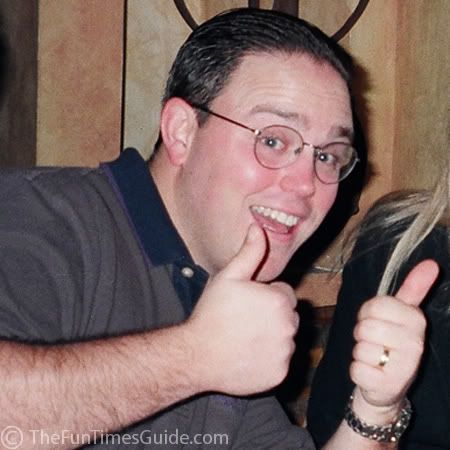 [1]
[1]
I actually missed the first week of Audio Arts because I was working. But, I was there in spirit. As I spend eight hours a day binding folders, punching sheets of paper, drilling holes in paper (drilling was actually fun) and enjoying the smell of melted plastic as I shrink wrapped books, I knew that next week I would be back at uni. Although I did enjoy the money even if it is slave labour.
The class however was on recording sessions. I have actually been lucky in the past with my recordings. I have probably done about four band recordings overall and I haven’t yet been in a situation where the band is arguing, yelling names at each other, or blaming me as the sound engineer for their own dodgy performances. We’ll see what happens in the future.
For the exercise this week, I have chosen to do the song Get Back by The Beatles. To be perfectly honest, the main reason why I chose this song was because I knew it would be pretty easy. Also I know The Beatles songs really well because they’re one of my favourite bands.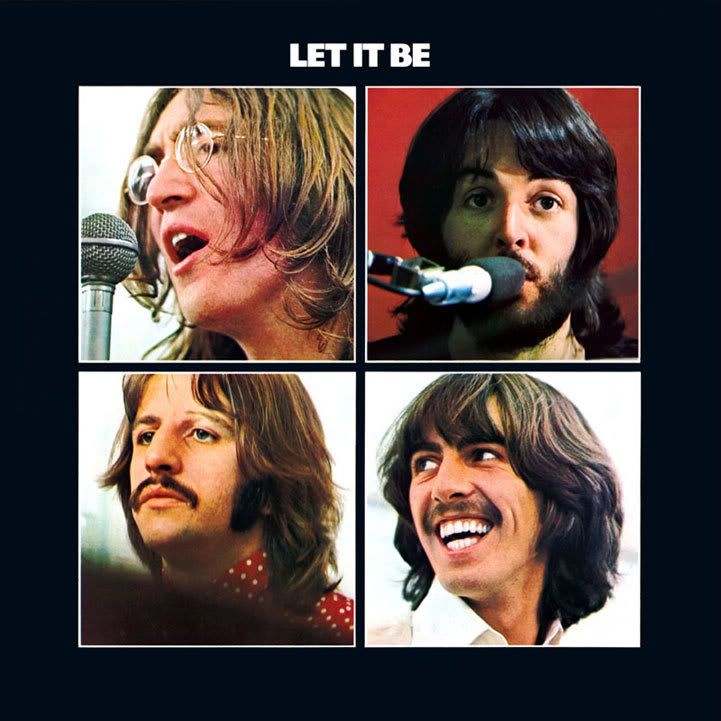 [2]
[2]
RECORDING DETAIL
Artists: The Beatles
Album: Let It Be
Track: Get Back
Style: Rock
Duration: 2’30
RECORDING LOCATION
EMU Space
Adelaide University
BAND MEMBERS / INSTRUMENTS
John Lennon - Lead Guitar
Paul McCartney - Bass Guitar
George Harrison - Rhythm Guitar
Ringo Star - Drums
Billy Preston - Electric Piano
Lead Guitar - Epiphone Casino
Bass Guitar - Hofner Bass
Rhythm - Fender Telecaster
Electric Piano - Fender Rhodes
Drums - Ludwig Drums
MICROPHONE ASSIGNMENT
Vocals - Rode NTV for lead vocals
- Neumann U87 for back up vocals
Lead Guitar - Shure SM-57
Bass Guitar - Shure Beta 52A
Rhythm Guitar - Shure SM-57
Electric Piano - Neuman U89i
Drum - Kick Inner - Sennheiser MD-421
- Kick Outer - Neuman KM-84i
- Snare Top - Rode NT5
- Snare Botm - Rode NT5 (phase inverted)
- Hi-hats - Neuman KM-84i
- Toms (2) - Shure Beta56A
- Overheads - Rode NT5
- Room Mics - 2 x Neuman U87
PROTOOLS TRACK SETUP / MICROPHONE INPUT ORDER
1. Kick Inner
2. Kick Outer
3. Snare Top
4. Snare Bottom
5. Hi-Hats
6. Tom High
7. Tom Mid
8. Overhead L
9. Overhead R
10. Bass Guitar
11. Rhythm Guitar
12. Lead Guitar
13. Electric Piano
14. Backup Vocals
15. Lead Vocals
16. Room Mic L
17. Room Mic R
EFFECTS
Lead Guitar - Reverb, Compressor
Bass Guitar - Compressor
Rhythm - Compressor, Slight Reverb, Slight Delay (small delay time / low feedback)
Electric Piano - Compressor, Reverb
Drums - Kick - Compressor
- Snare - Reverb, Compressor
- Hats - Compressor
- Toms - Compressor
- OHs - Compressor [3] [4]
[1] ‘Thumbs up’ The Fun Times Guide. http://thefuntimesguide.com/images/blogs/thumbs-up-matt.jpg (Accessed 2/3/07)
[2] 'Let It Be (Album)' Wikipedia. http://upload.wikimedia.org/wikipedia/en/2/25/LetItBe.jpg (Accessed 2/3/07)
[3] David Grice. 'Audio Arts Lecture - EMU Space'. Lecture presented in the EMU Space, Electronic Music Unit, University of Adelaide, 27th February 2007.
[4] 'Let It Be (Album)' Wikipedia. http://en.wikipedia.org/wiki/Let_It_Be_(album) (Accessed 2/3/07)
